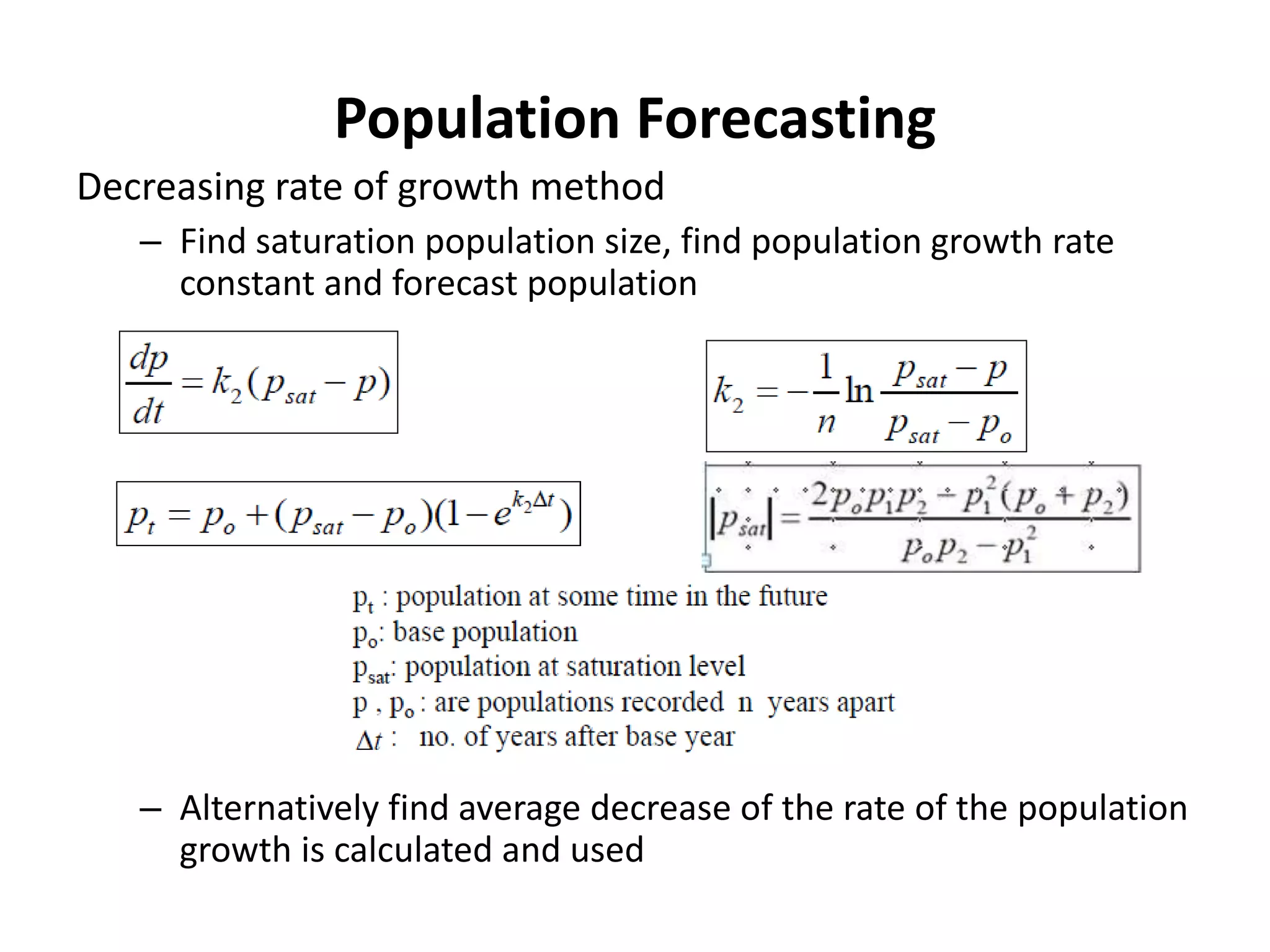This document discusses water demand forecasting for urban water supply systems. It covers key factors in determining water demands, including population projections, per capita water usage rates that vary by location and usage type, and factors that affect demand like climate, income levels, development patterns and water conservation efforts. The document provides guidance on estimating average day, maximum day and peak hour water demands that systems are designed for, as well as common methods for population forecasting.























